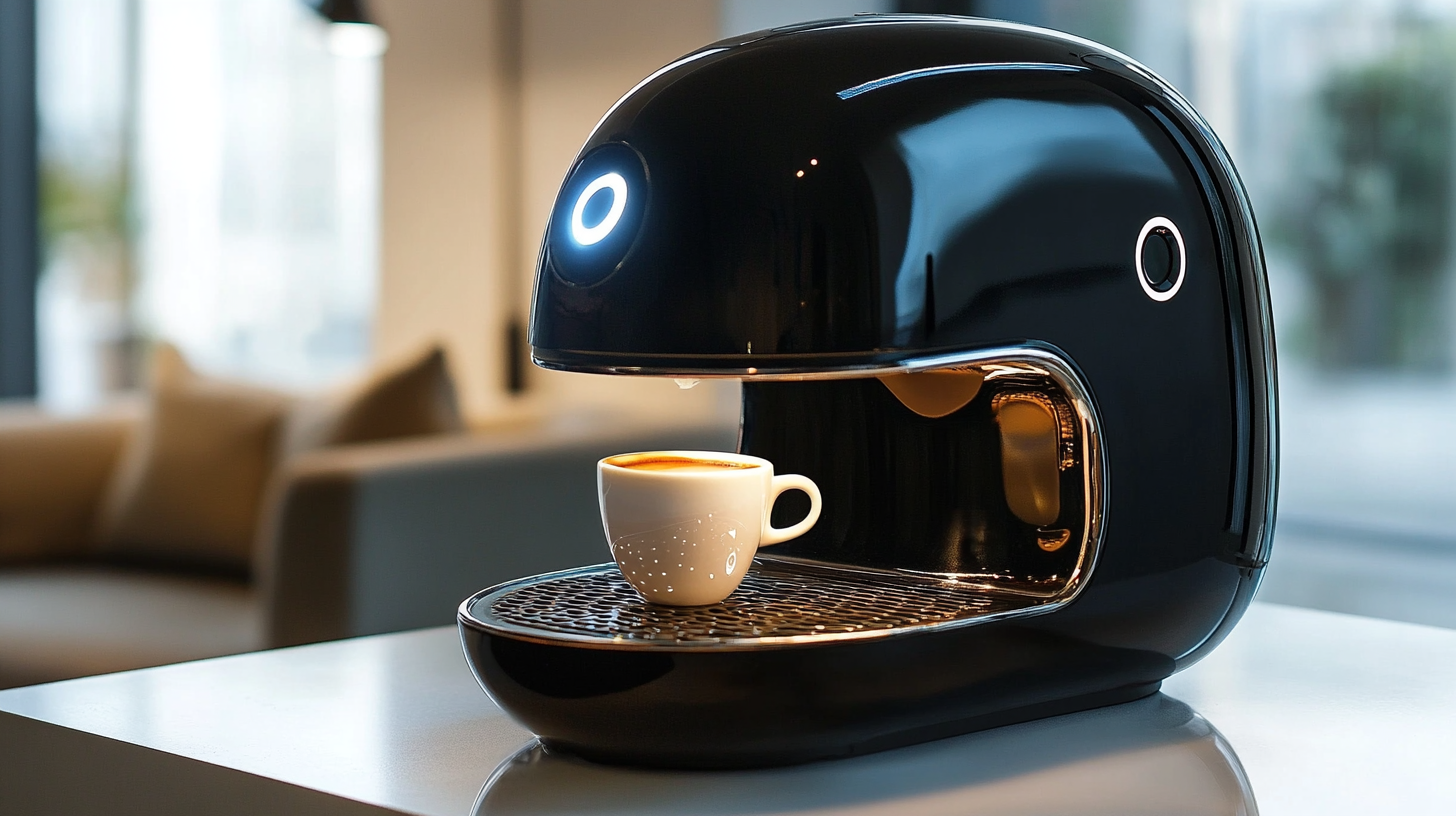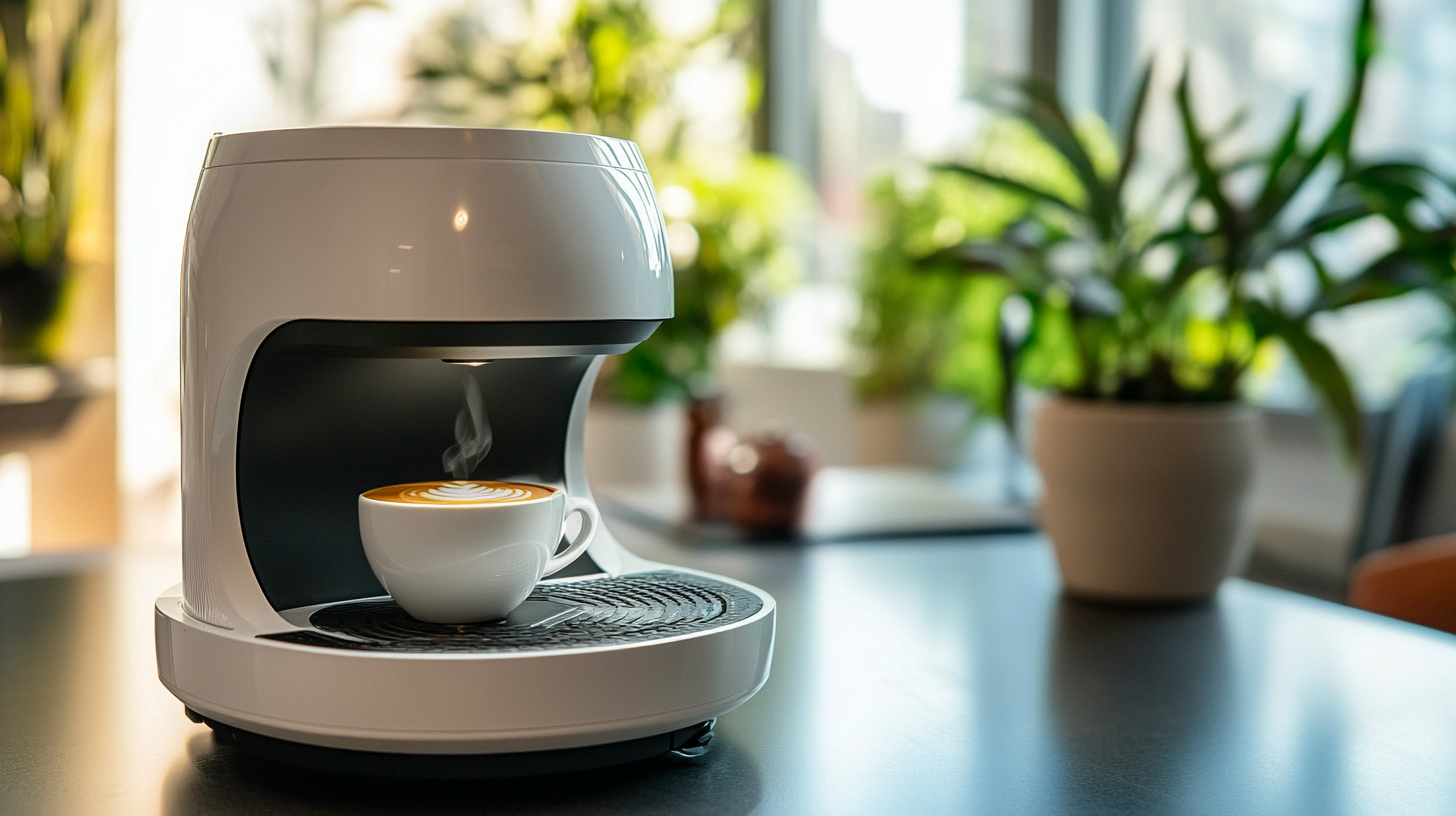How the Best The Robot Coffee Machine Thrives Amidst US China Tariff Challenges
In recent years, the coffee machine industry has experienced a remarkable transformation driven by innovation and technology, with "The Robot Coffee Machine" emerging as a game-changer in the market. According to a report by IBISWorld, the coffee machine manufacturing sector in the U.S. alone has reached a valuation of over $1 billion, reflecting a robust demand for advanced coffee solutions. Despite escalating trade tensions and the imposition of tariffs between the U.S. and China, which have complicated supply chains and increased operational costs, companies in this sector have demonstrated resilience. As noted by the International Trade Administration, Chinese manufacturers have leveraged competitive pricing and sophisticated engineering to not only survive but thrive in such an environment, leading to a 15% year-over-year growth in exports of automated coffee machinery. This article explores how "The Robot Coffee Machine" has managed to maintain its upward trajectory amidst these challenges, emphasizing innovation, adaptation, and strategic positioning in a complex trade landscape.

The Resilience of Robot Coffee Machines in a Tariff-Heavy Market
In the ever-challenging landscape of US-China tariffs, robot coffee machines have demonstrated remarkable resilience. These innovative appliances have managed to maintain popularity among consumers who crave efficiency and quality in their coffee experience. The unique combination of advanced technology and ease of use positions them well in a market where traditional coffee processing may face increased costs.
Tips for manufacturers include focusing on local sourcing and production. By reducing reliance on imported components, businesses can mitigate the impact of tariffs and ensure smoother operations. Moreover, enhancing the value proposition of these machines, such as integrating AI for personalized brewing experiences, can attract consumers despite price fluctuations.
For consumers, being informed about the features and benefits of robot coffee machines can aid in making wise purchasing decisions. Look for machines that not only excel in brewing but also offer durability and ease of maintenance. By investing in quality, coffee lovers can enjoy superior coffee experiences even in a tariff-heavy market, ultimately supporting a sustainable coffee culture at home.

Understanding the Impact of US-China Tariffs on Manufacturing Sectors
The ongoing US-China trade tensions have created a challenging environment for various manufacturing sectors, particularly for companies relying on imports from China. According to a report by the National Association of Manufacturers, over 60% of manufacturers in the US have reported that tariffs have raised their operating costs significantly. For the robot coffee machine sector, which heavily depends on specific electronic components sourced from China, these increased costs impact both production and pricing strategies. Companies are compelled to either absorb the costs or pass them on to consumers, leading to a delicate balancing act as they navigate consumer demand and competition.
Despite these hurdles, innovative companies in the robot coffee machine industry are finding ways to thrive. A study from the International Trade Administration revealed that US imports of coffee machines have surged, with a growth rate of 12% annually over the past three years, indicating a robust demand. Manufacturers are adapting by diversifying their supply chains to include domestic sources and exploring automation technology, which can potentially reduce reliance on foreign components. By leveraging these strategies, businesses not only mitigate the adverse impacts of tariffs but also position themselves for sustainable growth in an evolving market.
Impact of US-China Tariffs on Coffee Machine Manufacturing
Innovative Strategies Empowers Chinese Manufacturers to Adapt
In the face of evolving market dynamics and increased tariffs, Chinese manufacturers have showcased remarkable resilience by implementing innovative strategies. As highlighted in various sectors, from biotechnology to fast-moving consumer goods, the ability to adapt to change has become paramount. This is particularly evident in the robotics industry, where companies, home to advanced coffee machines, are navigating tariff challenges effectively. By streamlining production processes and adopting cutting-edge technology, these manufacturers are not only remaining competitive but also setting new industry standards.
The latest trends indicate a clear shift in consumer behaviors, prompting manufacturers to tailor their offerings to meet the demands of a more discerning audience. This adaptability is crucial as global companies reassess their foothold in China, striving to capture market share amidst intensifying local competition. By embracing digital transformation and enhancing supply chain efficiencies, these companies are well-positioned to thrive in an environment characterized by rapid change and increased scrutiny. The strategic pivot towards innovation underscores the importance of remaining agile, as suppliers and manufacturers alike strive to maintain their competitive edge in a challenging landscape.
How the Best The Robot Coffee Machine Thrives Amidst US China Tariff Challenges
| Dimension | Data |
|---|---|
| Market Share in US | 25% |
| Average Production Cost | $150 |
| Sales Growth Rate (2023) | 18% |
| Main Export Market | United States |
| Top Competitors | Company A, Company B, Company C |
| Adaptation Strategies | Innovative Technology & Cost Reduction |
| Research & Development Investment | $5 million |
Consumer Preferences Driving Growth for Robot Coffee Machines
As consumer preferences continue to evolve, robot coffee machines are carving out a significant niche in the bustling coffee market. With the demand for convenience and innovation on the rise, these machines have seamlessly integrated into everyday life, offering barista-quality coffee with the push of a button. In the wake of US-China tariff challenges, manufacturers are adapting to changing economic landscapes while maintaining high standards of quality and performance.
To capitalize on this growing trend, it’s crucial for enthusiasts to recognize key features that enhance their coffee experience. **Tip 1**: Look for machines with customizable settings that cater to your unique preferences—like strength, grind size, and brew temperature. This personal touch can transform your morning routine from mundane to exceptional. **Tip 2**: Consider investing in a robot coffee machine that supports sustainable practices, such as energy-efficient brewing and recyclable materials, to align your coffee habits with eco-friendly choices.
Moreover, staying updated on the latest innovations can help consumers make informed decisions. **Tip 3**: Research user reviews and watch demonstration videos to understand the real-world performance of different models. This can ensure that your purchase not only fits within your budget but also meets your taste expectations, further driving the appeal of robot coffee machines in today’s market.
Market Share of Robot Coffee Machines in 2023
The Future Landscape of Robotics and Trade Relations Between US and China
As the landscape of global trade continues to evolve, the robotics industry finds itself at the crossroads of innovation and geopolitical tension, particularly between the US and China. The ongoing tariffs and trade policies have significant implications for companies engaged in the development and deployment of robotic technologies. For instance, the robot coffee machine has emerged as a symbol of this dynamic, showcasing how businesses adapt to shifting economic conditions while striving to maintain competitive pricing and quality standards.
With manufacturers caught in the crossfire of tariffs, the focus is shifting towards enhancing local production capabilities and exploring alternative supply chains. This not only helps mitigate the impact of external trade barriers but also fosters innovation in robotics tailored to different market needs. Additionally, as both countries seek technological leadership, there is an increased impetus for collaboration in research and development, particularly in fields like artificial intelligence and automation. The future promises a complex yet potentially fruitful relationship where both nations can benefit from shared advancements while navigating the intricacies of trade relations in a rapidly evolving global market.
